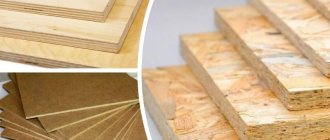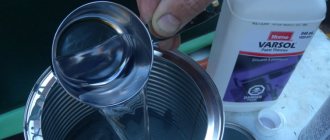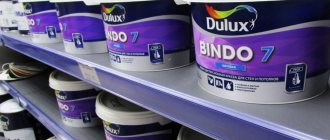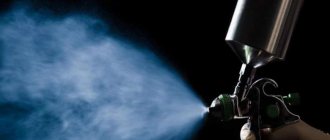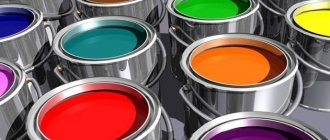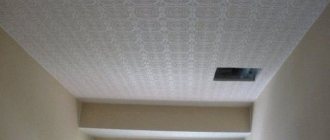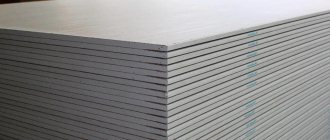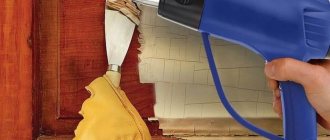Carrying out painting work involves not only preparing paint and varnish, but also preparing the correct composition for this procedure. The overall result depends on the physical properties of the painting material.
If the work will be carried out using a spray gun, then the composition should be liquid, this way it will be possible to avoid smudges. But when holding brushes in your hands, you should use viscous paint.
As a rule, all manufacturers indicate how to dilute their product, but sometimes the instructions can be an excellent advertising event that promotes a related product of the same brand, and it can be expensive.
To minimize costs and obtain high-quality components for painting a car, you should know the criteria for choosing paint, solvent, their interaction conditions, and much more.
When carrying out high-quality grinding work on the body, some cracks still remain on it. To fill all micro cracks, it is worth applying less thick paint.
Otherwise, minor deformations may appear on the painted surface of the car.
It is also not worth diluting the paint too much, because this is fraught with the appearance of shagreen, and the surface will take a long time to dry and worse, and who knows what may happen during this time.
This result directly depends on the paint, but the varnish plays an equally important role in the result; it is responsible for the gloss and strength of the coating that was previously applied.
But still, the solvent is added to the paint so that it adheres more easily to the surface; the only question remains in proportion, which depends on all the conditions where painting is carried out, taking into account technologies, volumes and many other points.
The quality of the applied coating determines the protection of the body from corrosion and other physical damage.
Solvents are divided depending on the temperature and time it takes for the paint to dry, but first of all you need to decide on the paint, how to choose it?
Choosing paint for painting a car
Depending on the concentration of components, all enamels are divided into: highly filled, filled to the middle, low filled.
In the first case, such paint is marked with the abbreviation VHS, but low-fill paints are designated as LS.
“Fullness” is a property that is responsible for the viscosity and volatility of a material. Knowing this criterion, you can determine how much solvent and other components are added to the paint so that it does not dry out.
Before applying paint, you should always read the instructions for it.
How much paint will it take to completely decorate a car? This question interests not only beginners in this matter, but also more experienced car enthusiasts who have already encountered this issue.
This issue must be approached individually. The amount of paint used is also affected by the previously selected solvent.
They are also polar and non-polar . To avoid possible compatibility problems, many experts recommend using products from one manufacturer, because this is the only way to avoid all sorts of defects.
Paint made from polar components is mixed with the same solvent, which contains hydroxyl group substances - ketones, alcohols, etc. Non-polar substances include other substances, for example, white spirit, kerosene.
Trying to make a replacement is strictly prohibited. In order to change the viscosity of the consistency, you can use a special device, a viscometer.
Such a device will not be as expensive as you think, but its role is irreplaceable. The holes in this container are calibrated.
When working, you can use viscometers of different volumes and diameters. How many seconds will the material flow out of this device, these are the indicators of its viscosity.
To obtain the most accurate data, all work with the device must be carried out in a certain temperature regime.
To correctly determine the type of composition, you should understand what type of solvent is specified in the instructions for the paint.
For example, if the composition contains acetone, then it comes into contact only with polar compounds. Many people consider xylene and benzene to be universal solvents; they are not so tied to the components of the paint.
Wood resin and glue from poplar buds. Holes in the varnish
This problem is often encountered by motorists who park in the shade of spreading trees. It would seem that what’s scary about tree resin? Natural products, by definition, should be healthy. But in reality the opposite is true. Wood resins combine easily with heated varnish. The higher the temperature of the paintwork, the faster adhesion occurs. The leaders in the risk group are Japanese cars, which traditionally have softer and thinner varnish. If the resin or wood glue has time to combine with the varnish, the marks will remain on it forever.
Tree sap is a real problem. Firstly, it is really difficult to wipe off without damaging the varnish. Secondly, if you do not remove it immediately, it becomes attached to the varnish layer, and even after removing the old stain, the varnish layer looks damaged. Therefore, very often, owners of expensive cars immediately go to specialists with such contaminants.
- In some cases, these are stains that can only be removed by polishing.
- In some cases, these are craters that can only be removed by painting.
Myth. Any tar stain cleaner can remove tree sap.
Is it true. Only a few bitumen cleaners deal with tree resins. Bitumen and tree resins have different natures and chemical compositions, so it is correct to use special cleaners to remove them.
Myth. There is no protection against tree resin. The main thing is not to let the resin eat into the paint. The faster you wash it off, the lower the risk of permanent stains.
Is it true. Some types of ceramic protective coatings such as “liquid glass” are highly resistant to tree resin. Yes, with prolonged contact, even the coolest ceramics will most likely succumb to the poplar “glue,” but the factory varnish will remain intact. The rule “The faster you wash it off, the less the risk” also applies in this case.
This is the same “orange” cleaner that professionals use to remove organic contaminants. Including tree resin. Services and detailers buy this product in large canisters. For household use it is bottled.
How to thin paint for a spray gun
The speed of paint spreading and drying depends on the external temperature. To protect and avoid bad results, manufacturers try to play it safe and recommend using each thinner at a certain temperature.
Car enamels are provided in liquid form, and when you open it, this does not mean that it is ready for application; you need to know the proportions that will allow the paint to lie easily and evenly on the metal surface.
When adding a solvent, take into account the composition of the paint, because it may already contain a certain amount of it.
You should not take measurements yourself and add solvent by eye.
Therefore, the ideal solvent for painting a car is one that:
- Used at low temperatures, the paint dries quickly, so drips do not even have time to appear.
- If the ambient temperature is within 25C, you should pay attention to a solvent with an average evaporation rate.
- If the temperature is above 25C, then a solvent with slow evaporation properties is suitable. When the paint begins to spread over the surface, the car owner will receive durable body protection.
If the color you choose is “pearl” or “metallic,” then you can’t think of anything better than a slow solvent.
This is the only way to achieve a uniform color and the absence of other defects.
The paint is ready and all that remains is to filter it, the most common way is to use an ordinary nylon stocking for this, only after this procedure can work on painting the surface be carried out.
Drying accelerators.
To speed up the drying process of varnish or primer, drying accelerators can be added to them, which is especially noticeable in the cold season when there is no spray booth or lamps. This reactive additive is added to the varnish in small proportions (about 2%). It can significantly reduce drying time, but you should use it carefully - it is better to use ordinary materials to paint a car completely.
How much paint do you need to paint a car?
Painting involves a certain amount of materials, the consumption depends on a number of reasons:
- What surface is covered, its dimensions;
- Depending on the brand of paint, the coating spreads differently.
- Sometimes paint needs to be applied several times to achieve the desired color.
- It is important to know what primer was used, its color and quality.
- The spray gun and its more important properties are important when painting the body.
We recommend reading about the spray booth, what it should be like, and the compressor for the spray gun.
Properly diluted paint is not wasted as much, which allows you to save money and achieve high-quality painting.
A viscometer will be no less useful in your work, but if you don’t have one at hand, it’s enough to use a regular ruler.
Only experienced craftsmen can dilute paint with solvent by eye, but for beginners, these instructions are necessary.
Two-component enamel requires the following proportion: 100 ml of hardener plus 500 ml of solvent mixed with a liter of paint.
To avoid confusion with proportions, it is best to use a measuring ruler or even a glass. An equally important task is to achieve the required viscosity.
If you don’t have a device at hand to measure this indicator - a viscometer, then you can use the traditional method: if the paint does not flow, but drips, then everything is normal with viscosity.
The fluidity of the paint is also an important factor when using a spray gun; in this case, for a device with a small diameter nozzle, a liquid composition is required, but if the work is carried out with a roller, then the thickness is important here.
Before you start painting, it is best to test the diluted substance on a coating that you do not mind using.
To make sure that the diluted material is correct, you don’t need a lot of substance, you need to use a brush or device a couple of times.
Do not forget that fluidity directly depends on temperature; it turns out that the warmer it is, the greater the viscosity.
You shouldn’t keep the paint in the container for a long time; it will harden over time, so for proper work you may need to dilute a new proportion of the solution.
Metallic is a rather capricious paint that requires compliance with many rules. Most often, the composition is used to paint car or motorcycle body parts. This is due to the aesthetic properties of the material. After application to the surface, the paint gives a metallic shine and a reflective coating.
Thinning technique
The most important parameter when diluting paint is viscosity. The quality of the coating will depend on how correctly you select the viscosity of the composition. A material that is too thick will not fill all the small pores and roughness, and it is impossible to get rid of them even with careful surface treatment.
Nowadays many ready-made enamels are sold. They are already diluted and ready for use. However, even using the factory composition, it is necessary to dilute it with a solvent for better application to the surface of the structure. This will also provide quick drying and additional protection against corrosion.
All solvents are divided into three groups depending on the rate of evaporation. For each climate, a special solvent must be selected. This determines what the coating will look like after drying. The main types are:
- fast - used in low temperature conditions;
- slow - suitable for work in hot weather;
- universal - used under any conditions.
Surfaces are painted with a spray gun, so it is necessary to select a thickness that the equipment can handle. The main parameter that you need to pay attention to when working is temperature. The spreading and drying of paint depends entirely on this indicator. At the moment, there are many thinners produced specifically for work at different temperatures. Unlike solvents, they are more expensive, but more effective.
It is not recommended to determine the amount of thinner by eye. Mixing should be done in small portions and after each time measure their content in the paint. Therefore, it is better for inexperienced people to use universal solvents suitable for any temperature conditions.
On each can of paint, the manufacturer indicates the correct ratio of solvent and composition. The first step is to adhere to the recommended parameters. However, depending on the date of manufacture and the type of solvent chosen, the mixture may not always reach the required consistency. Therefore, it is worth conducting several experiments with small portions of materials.
On each can, the manufacturer indicates the correct ratio of solvent and composition, but this does not always allow you to achieve the required consistency
Recommendations
The most common solvent to paint ratio is 1/1. Those. you need to add the same amount of thinner as paint. However, the correctness of painting directly depends on the method of applying the composition to the surface.
It is recommended to make the first layer “dry”. For such a layer, you need to dilute 2 parts of paint and 1 part of solvent. This way you will ensure the structure is protected from defects. The surface will become smoother, allowing for more uniform application.
After waiting 15-20 minutes, the second layer is applied. Apply a basic 1/1 ratio and coat the surface of the piece thickly with the spray gun. It will not cover the primer and will have a matte finish. After complete drying, the last layer is applied with the same ratio, but more thinly.
After painting, it is necessary to coat the surface with varnish with the addition of a solvent to achieve shine. When the composition has dried, polish the surface and you will achieve the desired effect.
Car painting jobs require attention and knowledge. To make a car look beautiful, it is necessary not only to carefully prepare the surface of the car body, but also to choose a high-quality paint coating. Moreover, the material must be prepared correctly. To achieve a better result, a special car paint solvent is added to it.
Removal methods
There are several methods that will help remove old paint from a car body. When choosing one, you should consider the location and size of the scratches or paint chips. It should also be taken into account that each method will require special tools. Regardless of the chosen method of removing old varnish, you should follow safety rules.
Mechanical removal method
This method allows you to remove old paint from a car quickly enough. At the same time, rust and scale from welding are removed along with paint and varnish. Therefore, the mechanical method of removing old varnish is the most practical for major body repairs.
To remove old paint from a car you will need the following tools:
A brush with wire bristles is placed on the grinder, after which you can remove the varnish from the surface of the car using gentle rotational movements.
Removing paint from a car using a sandblaster is completely different. Water or air is supplied through it with the addition of small abrasive particles. It is important that the mixture is supplied under high pressure. Metal shavings, corundum or small rocks are used as abrasive materials. Hard grains of sand do an excellent job of removing old varnish, as well as corrosion. After sandblasting a car, the surface becomes rough. Thanks to this, the subsequent coating will adhere well.
Despite the advantages that removing old varnish with a sandblasting machine provides, it is used extremely rarely in everyday life, since the device is quite expensive. Investing in expensive equipment for one-time repairs is unprofitable.
In addition to the methods described, mechanical cleaning can be done manually. To do this, you can use a file, sandpaper, sanding mesh or scrapers. This method is convenient if you need to remove old varnish from a small area or in hard-to-reach places where another tool is missing. At the beginning of the work, the area is cleaned with coarse sandpaper. After this, use fine-grit sandpaper.
This method of removing old coating from the surface of the body gives a uniform result and is excellent for removing old paint and varnish.
Thermal paint removal method
How to remove old paint from a car using this method? The operating principle of this method is based on uniform heating of the metal. When exposed to high temperatures, the paint becomes soft and begins to peel off the metal surface. Then it is removed using a wide spatula. To warm up the surface of the body, use a gas burner, lamp or industrial hair dryer. It is important to choose the optimal heating temperature, because if the material is overheated, it can become deformed.
Despite the high efficiency of this method, it has a significant drawback - heated materials release toxic substances into the environment. To prevent poisoning of the body by toxic fumes, all work should be performed outdoors or in a well-ventilated area.
Chemical method of removing paint
For the procedure, special chemicals are used - acidic and alkaline solutions, as well as other solvents. The method is convenient because it does not require the use of expensive tools.
How to remove paint from a car using a chemical method? To do this, you need to apply the selected mixture to the surface of the body with a brush and wait for the time specified in the instructions (in most cases, the composition enters into a chemical reaction five minutes after application). If after the procedure the paint is not completely removed, the application process can be repeated. When the paint coating has softened, it is removed with a wide spatula, and the residue is washed off with high water pressure.
Types and features of the choice of solvents and thinners for automotive paints
All existing types of solvents can be divided into several groups, each of which differs from each other in the rate of evaporation. The solvent that will be added to the car paint is selected depending on climatic conditions. There are 3 types of funds:
- universal – used under any conditions;
- slow – can be used in places with elevated (positive) ambient temperatures;
- fast - used only at sub-zero temperatures.
Tips and tricks for proper paint dilution
There are a huge number of paints and varnishes, but only some of their representatives are used to paint a car:
All of them differ from each other in performance characteristics, but at the same time they are effectively used by car owners. For a 100% high-quality result, these products are diluted with solvents. What solvent should you use to dilute car paint?
Acrylic paints
This is a two-component liquid, which contains a thinner and a hardener. The desired color is achieved by applying a certain number of layers of material.
- does not fade in the sun, ages slowly;
- easy to apply and does not require varnishing;
- dries quickly;
- can be used at high temperatures;
- easy to polish.
For acrylic paints, a specialized automotive solvent is used, which is more expensive than conventional organic solvents (646, 647), but it is worth it. If such a product could not be found, then you can use its analogue - solvent 651 or P 12.
Alkyd paints
Such products are rarely used for painting car bodies, only because they require a more careful approach. The resulting surface should be varnished and polished, but the finished products are distinguished by high performance characteristics and good appearance. The coating prevents the formation of corrosion and performs well in adverse conditions.
For dissolution, white spirit, gasoline, solvent, turpentine and its mixtures are used. There is a universal solvent P 4, but it is better to choose according to the product labeling.
Nitro enamels
They have a mirror effect, for which they have received wide appreciation from car enthusiasts. The body, painted with nitro enamel, differs from other cars in its gloss and metallic sheen. The only significant drawback is toxic fumes during painting work, which are harmful to human health.
Before application, the body surface must be perfectly cleaned and prepared for painting. Nitroenamel dries quickly and lasts quite a long time. It is diluted with organic products, for example, transparent 646.
Advice. This solvent is highly flammable and belongs to the category of aggressive solvents, so it must be handled with extreme caution. To play it safe, you can use the universal product P 4.
Water-based paints
This type of paint is considered the most suitable for painting a car, although it requires expensive equipment to achieve maximum effect. Such products are environmentally friendly and have a number of advantages:
- the surface does not need to be thoroughly prepared;
- there is no swelling effect;
- high adhesion of the material;
- perfect result.
The only negative is the long drying time. Water-based paints are dissolved with plain water or alcohol.
Afterword
The modern chemical industry produces cleaners for almost all types of contaminants. It is important to choose them thoughtfully and apply them wisely. If a product from one manufacturer does not work, this does not mean that an analogue from another brand will be just as useless. And price is not always an indicator of effectiveness. Sometimes cheap auto chemicals work better than expensive ones. If one cleaner doesn't work, you need to try another.
This car is treated with iShield ceramic protection. The coating forms a layer with a hardness rating of 9H+. It protects against foreign paints and is not afraid of droppings and insects.
But if you are not inclined to risky experiments, then it would be better to immediately turn to detailing specialists. They will apply a hard protective coating to the paintwork - ceramics or liquid glass. A durable protective layer will absorb all negative influences, be it bitumen, paint from markings, poplar resin, crushed insects or bird droppings. This protection does not always save you from stones flying at high speed, but surviving service in a beast washer without consequences will easily help.
The whole lobovukha has small dots of varnish. I tried to wash it with 646 solvent, but to no avail. Tell me how to remove this crap?
Features of metallic paint dilution
Metallic is considered a complex paintwork and requires precise application technology. The product is widely used for painting vehicles (cars and motorcycles). The surface has a metallic reflective sheen. This effect is explained by the presence of special aluminum powder in the material. The finished coating is not affected by corrosion, and the result will please the eye for a long time. However, mechanical stress and disruption of the integrity of the coating will ultimately lead to its destruction. The paint does not fade under the influence of ultraviolet rays of the sun.
The quality of the coating depends on the degree of viscosity of the material, so the solvent for such paint is carefully selected. A product that is too thick can harm the result because it will not be able to completely fill the rough surface of the car body. Modern metallic paints and varnishes are diluted directly by the manufacturer and are ready for application. The cost of such materials is much higher than others, however, the quality of the coating will amaze with its splendor and beauty.
«>
Properties
Metallic differs from regular paint by the presence of aluminum powder in its composition. In general, it is an auto enamel containing a binder, pigment, solvent and small metal particles. The presence of such components allows not only to give the necessary shade to the structure, but also creates the effect of metal shimmering in the sun. However, getting the right results is quite difficult. It is necessary to apply the paint in an even layer, otherwise stains and smudges will appear during operation.
Metallic paint is less susceptible to corrosion than other materials. Over time, the composition does not lose its performance properties and is not exposed to external factors. True, violation of the integrity of the coating leads to gradual destruction of the material.
Due to the high thermal conductivity of the metal contained in the composition, the paint does not overheat when exposed to sunlight and does not fade. The cost of such paint is higher than that of simple enamels, however, it is worth the money spent.
